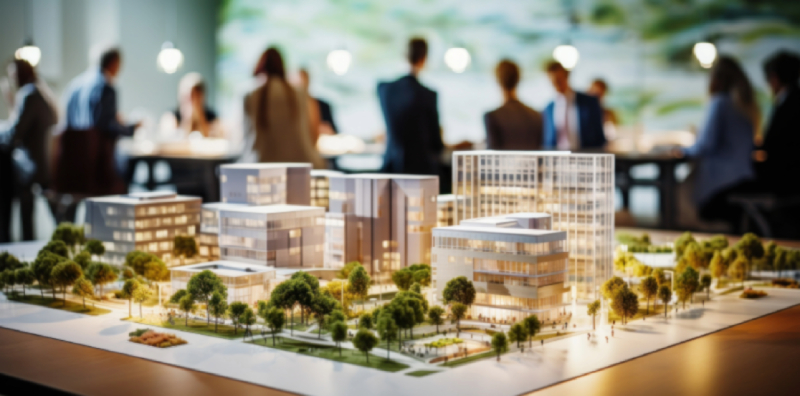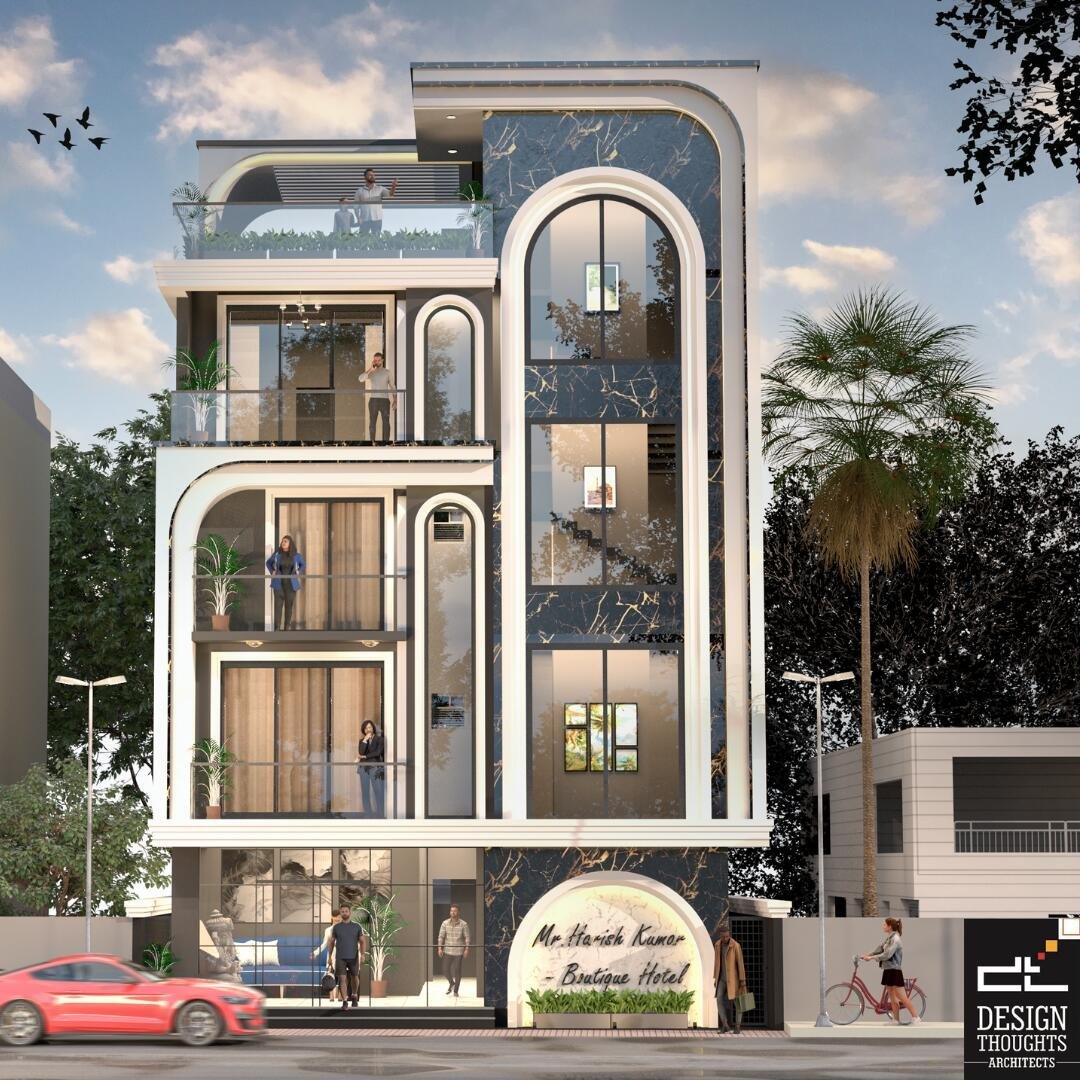Discover the Innovative Solutions Provided by Commercial Architects for Your Next Job
Commercial architects play an important duty fit the built environment. They blend capability with aesthetic appeal, producing rooms that resonate with brand identification. These professionals utilize cutting-edge design options, lasting techniques, and advanced modern technologies to boost user experiences. Their joint approach assurances alignment with client visions and functional needs. Nevertheless, the level of their services often extends past layout. The following action in understanding exactly how these architects navigate complex task demands might amaze you.
Comprehending the Role of Commercial Architects
The duty of business architects might differ depending on the specific project, their key function revolves around creating functional and visually attractive areas for services. These professionals are entrusted with understanding the distinct demands of each customer, whether it be a store, office complex, or commercial center. They perform extensive site analyses and collaborate with stakeholders to guarantee that the layout aligns with the business purposes and brand name identity.Commercial architects additionally navigate different regulative requirements, securing compliance with zoning laws and structure codes. Their knowledge reaches creating sustainable designs that advertise power effectiveness and environmental obligation. Furthermore, they manage the task's timeline and budget plan, coordinating with contractors and designers throughout the construction procedure. By mixing imagination with technological expertise, business architects play a necessary role in transforming theoretical concepts right into substantial facts, eventually boosting the performance and charm of industrial spaces.
Cutting-edge Design Solutions for Special Spaces
As business spaces progressively require diversity to stick out in competitive markets, innovative design solutions have actually become important for architects. These experts utilize their creativity and technical proficiency to craft special settings that reflect brand identity and improve customer experience. By incorporating sophisticated technology and materials, industrial architects can transform average areas right into bewitching places that engage customers and influence employees.Architects use different strategies, such as adaptive reuse, which renews existing frameworks while maintaining their historic importance. They likewise check out unique formats and multifunctional spaces that cater to diverse needs, guaranteeing flexibility for future growth.Furthermore, the incorporation of biophilic design-- bringing nature indoors-- creates welcoming ambiences that advertise health - commercial architects. This focus to information in cutting-edge design not only addresses aesthetic issues however also promotes neighborhood and partnership. Inevitably, these customized remedies permit organizations to thrive in an ever-evolving landscape, setting them apart from competitors
Sustainable Design Practices
Sustainable design practices have emerged as a critical focus for commercial architects seeking to create impactful designs that reverberate with ecological stewardship. These techniques prioritize using sustainable resources, power efficiency, and marginal waste, showing a commitment to lowering the eco-friendly footprint of buildings. Architects incorporate products that are sustainably sourced or recycled, making sure that building methods straighten with eco-friendly principles.Furthermore, the combination of eco-friendly roofs and wall surfaces boosts biodiversity while improving power efficiency. Efficient water monitoring systems, such as rainwater harvesting, add to sustainability by conserving water sources. All-natural air flow and daylighting approaches are also utilized to enhance indoor atmospheres, reducing dependence on artificial home heating and lighting.
Integrating Innovation in Architectural Layouts
A boosting variety of commercial architects are welcoming innovation as a transformative component in architectural style. By leveraging sophisticated software program tools such as Structure Details Modeling (BIM), architects can create in-depth 3D representations of projects, enabling boosted visualization and collaboration among stakeholders. This modern technology facilitates real-time modifications, decreasing errors and improving the layout process.Additionally, architects are integrating wise structure technologies into their layouts, which enhance energy performance and resident comfort. Functions such as automated lights, climate control, and protection systems can be perfectly included, promoting lasting practices and minimizing operational costs.The usage of virtual and enhanced fact likewise enables clients to experience designs before building begins, providing important insights into spatial partnerships and visual selections. Inevitably, special info the assimilation of modern technology in building layouts not just promotes technology yet additionally ensures that jobs are carried out with precision and aligned with contemporary demands.

Project Monitoring and Coordination Providers
Efficient project administration and coordination solutions are essential for the effective execution of commercial architectural tasks. These services guarantee that all facets of a job, from initial layout to last construction, are seamlessly incorporated. Commercial architects play a significant duty in collaborating in between different stakeholders, consisting of clients, contractors, and suppliers, to preserve clear interaction and alignment on project goals.By applying structured techniques, architects can manage timelines, spending plans, and resources properly, lessening delays and price overruns. They utilize project administration software program and tools to track progression, manage documentation, and help with partnership amongst group members.Additionally, these solutions consist of threat analysis and reduction strategies, verifying prospective obstacles are identified and dealt with proactively. The result is a streamlined process that enhances general job performance and high quality, inevitably leading to an effective end result that fulfills the customer's vision and assumptions.
Regulative Conformity and Zoning Aid
Reliable regulatory compliance and zoning aid are vital for the success of any type of industrial project. Architects must possess a deep understanding of neighborhood laws and zoning regulations to lead customers via the intricacies of the approval procedure. This competence not only ensures adherence to lawful demands however likewise aids maximize task style and performance.
Navigating Local Rules
How can business architects ensure their layouts line up with local laws? By staying well-informed regarding the ever-evolving landscape of building ordinance and regional regulations, architects play an important function in making sure compliance. They carry out extensive research to understand the certain regulations governing products, safety criteria, and building methods relevant to every task. Teaming up closely with regional authorities, industrial architects can steer through the complexities of governing structures successfully. They additionally facilitate required authorizations and inspections, enhancing the authorization procedure. This proactive method not just minimizes possible legal problems however likewise improves task effectiveness. Eventually, their proficiency in maneuvering neighborhood guidelines empowers clients to understand their vision while sticking to all required requirements and standards.
Zoning Law Know-how
Zoning law competence is essential for industrial architects guiding via the complexities of land use policies. These architects have comprehensive knowledge of neighborhood zoning codes, which govern property development, land use, and building specs. By recognizing these regulations, they help clients browse the usually intricate approval procedures needed for building and construction tasks. Their knowledge guarantees compliance with zoning laws, lessening the risk of project hold-ups or lawful complications.Additionally, business architects supply useful help link in obtaining necessary authorizations and variations, assisting in smoother interactions with neighborhood authorities. They likewise provide strategic referrals to maximize site design and maximize the possibility of a residential or commercial property while sticking to zoning limitations. Eventually, their zoning regulation efficiency plays an essential role in the effective awareness of industrial projects.
Collaborative Approaches With Clients and Stakeholders
Effective commercial style hinges on the ability to foster solid cooperation with customers and stakeholders throughout the style process - commercial architects. Architects engage in open discussions, making certain that all celebrations' visions and demands are incorporated right into the task. This collective approach starts in the first phases, where official statement architects carry out workshops and brainstorming sessions, enabling customers to express their goals and concerns.Stakeholder input is similarly vital; architects usually organize meetings with area participants, local federal governments, and other appropriate entities to collect diverse point of views. By utilizing visualization tools, such as 3D modeling, architects assist in much better understanding and communication.This repetitive comments process not just boosts style quality yet additionally constructs count on, leading to more successful outcomes. Eventually, the collaborative viewpoint of industrial architects transforms ideas into practical areas that show the ambitions of customers and the wider area, making certain an unified partnership throughout the task lifecycle

Often Asked Questions
What Is the Regular Timeline for an Industrial Architecture Task?
The normal timeline for a commercial style job varies, normally covering 6 to 18 months. Variables affecting this period include job complexity, regulatory authorizations, and customer responsiveness, influencing each stage from style to building completion.
How Do Commercial Architects Charge for Their Providers?
Commercial architects usually charge based on project extent, intricacy, and size. Common fee frameworks consist of hourly rates, fixed costs, or percentage-based charges determined from the total building and construction price, ensuring transparency and placement with client expectations.
Can Commercial Architects Assist With Interior Decoration?
Commercial architects can indeed help with indoor design, integrating capability and aesthetic appeals. Their competence warranties cohesive areas that line up with building vision, improving customer experience while meeting regulative demands and customer purposes through innovative design options.
What Kinds of Customers Do Commercial Architects Generally Work With?
Commercial architects normally team up with varied customers, including companies, government entities, schools, and charitable organizations (commercial architects). Each client looks for customized building options to fulfill details functional and aesthetic requirements for their projects and environments
Exactly How Do Commercial Architects Keep Upgraded With Layout Fads?
Commercial architects stay updated with style patterns via continuous education, going to market conferences, taking part in expert networks, and looking into emerging technologies. They also collaborate with other specialists to obtain understandings into ingenious materials and style techniques.
Comments on “Why commercial architects Use BIM to Improve Project Outcomes”